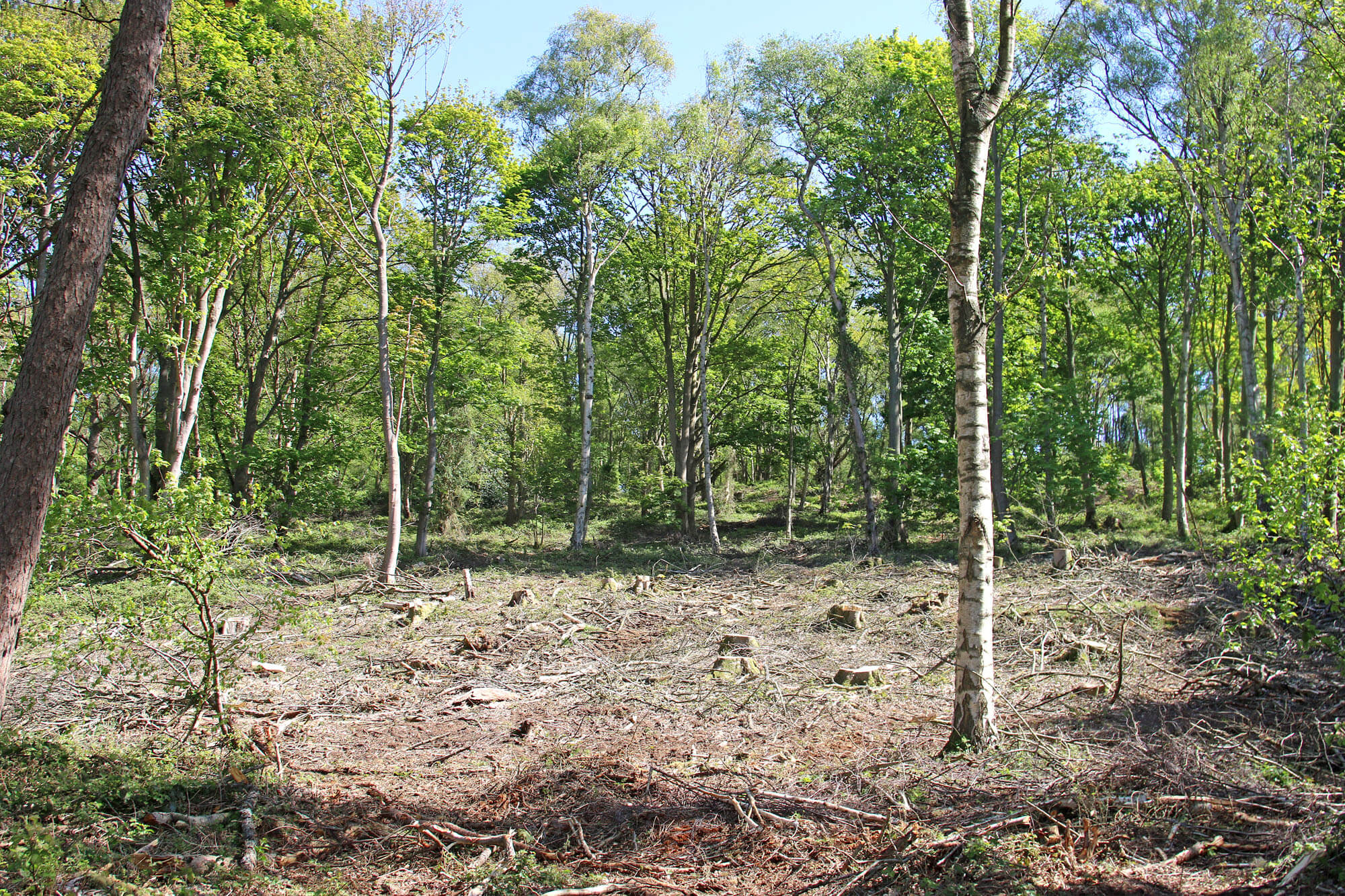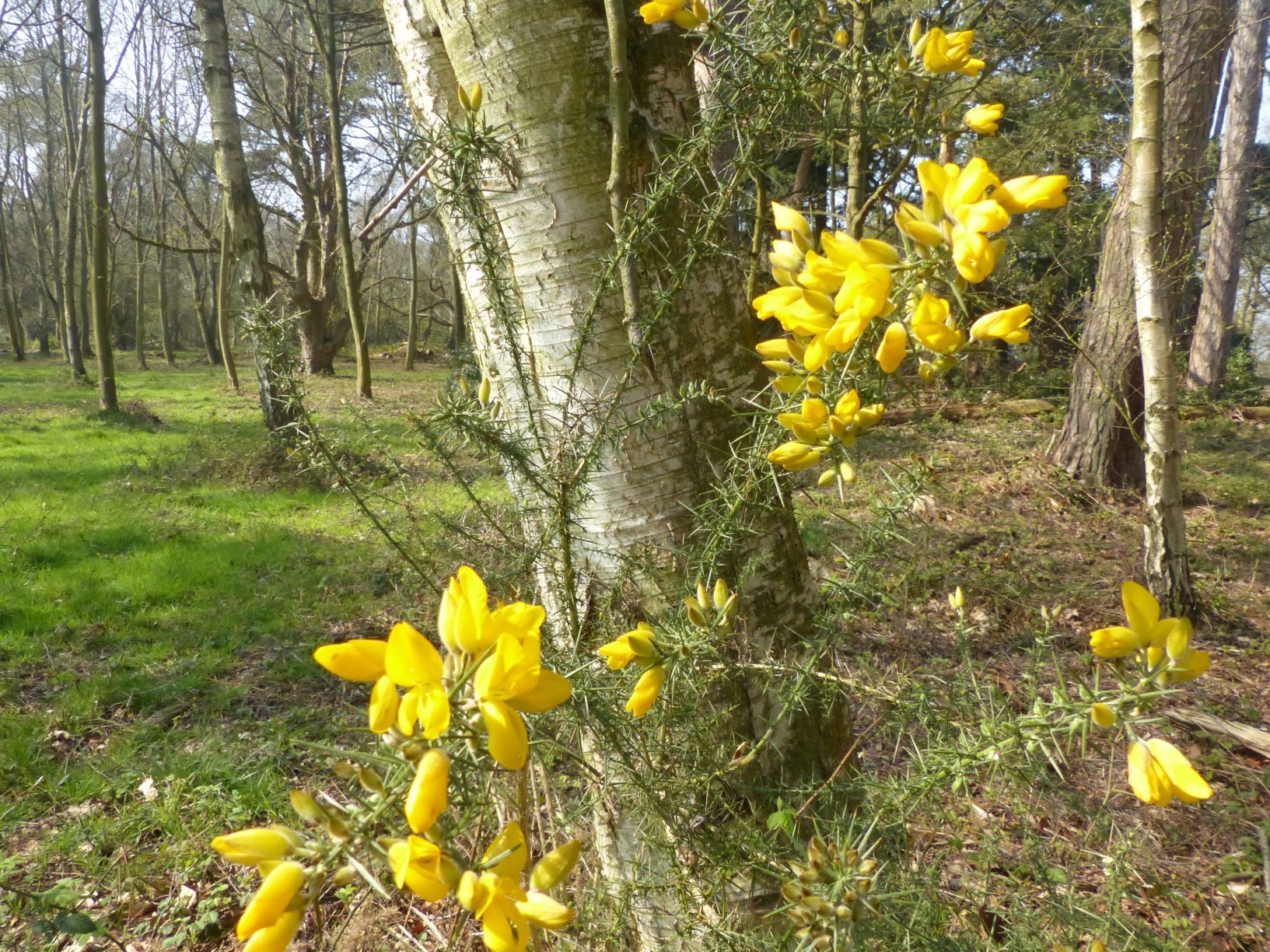


Many readers will already know that we are undertaking some changes in the Ken Hill Wood, which is situated in the centre of our rewilding area. These are to ensure that when we step back, natural processes can take over, and the wood is capable of becoming wild on its own.
As we described in a previous blog, this mostly involves the selective felling of trees in areas of closed canopy woodland, which currently have minimal biodiversity. Readers based in Snettisham may have already noticed some of this work going on.
Although we expect this work to provide some short term benefits to biodiversity in the form of ground-level vegetation and invertebrates, our main aim here is longer-term. This work is really about creating the conditions for natural processes associated with woodland pasture to return.

Woodland pasture is an important type of habitat. It is typically characterised by veteran trees (the “woodland”) dispersed among grasses and other ground-level vegetation (the “pasture”). And pockets of scrub tend to emerge, acting almost as nurseries to saplings by protecting them from grazing and browsing.
We are restoring large amounts of wood pasture because we understand this was formerly the most common habitat in the area that the modern-day Ken Hill Wood now sits. Lecturers at UEA have compiled strong evidence showing that wood pasture and heathland was common many centuries ago. And more broadly, academic circles have come to recognise the greater preponderance of wood pasture and open, grassy areas before the ‘Anthropocenic’ era.
Woodland pasture is not only defined by vegetation structure – crucially, it also involves the presence of wild herbivores. Without the effect of their grazing, the grassy and open areas would slowly revert to closed canopy forest.
Populations of wild deer move freely through Wild Ken Hill, which is home to 5 of the 6 UK deer species (Red, Roe, Fallow, Muntjac and CWD). But in time, we will also introduce wild cattle, ponies and pigs to mimic the effect of the herbivores that roamed the UK thousands of years ago.
The idea of wild herbivores moving through our woodland is hugely exciting. It also represents the return of critical natural processes and true rewilding. If we imagine Wild Ken Hill several thousand years ago, a mixture of wild herbivores herds would have been moving through the landscape.
This is important. The subsequent absence of these animals in the landscape means natural processes begin to break down. For example, herbivores help to cycle nutrients, improving the soil quality. They carry hundreds of seeds in their fur, helping vegetation proliferate. They disturb the soil with certain behaviours, like taking dust baths.
These activities are important in creating the diverse vegetation and soil health that supports a greater abundance of invertebrates, in turn supporting and small mammals supports bats, birds of prey, and larger mammals. These living organisms are therefore all connected by the natural processes that we are trying to restore.

So this work is all about ecological restoration, creating wood pasture, and the return of wild herbivores. Ultimately, it is all part of our vision to kick-start natural processes, so that we can step back, allowing the Ken Hill Wood to become truly wild.
As ever, we will continue to share our journey with you. We are hugely excited about the prospect of releasing wild herbivores into this woodland pasture and we will keep you updated on how and when this will happen. For more frequent updates, you can follow us on Instragram, and like our new Facebook page!